watch tower
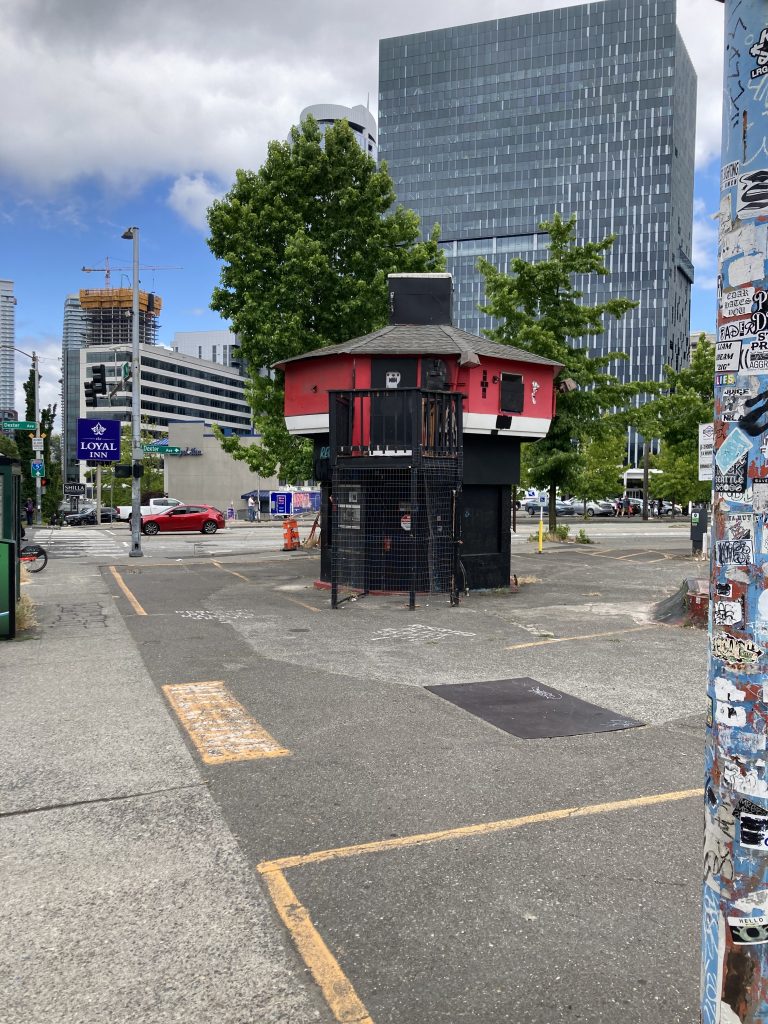
The traveler explores the American Wayside, verifying the contents of a mysterious guide written by a man with whom he shares a likeness and name. Excerpts from ‘Autumn by the Wayside: A Guide to America’s Shitholes’ are italicized. Traveler commentary is written in plain text.

‘It goes without saying that one should do their best to ignore signs about ‘The Ramp.’ It isn’t easy, though. The signs are frequent and large and sometimes illuminated. Sometimes they move, a goading cowboy’s arm pointing the way or waggling his finger, warning you not to try the ramp and somehow daring you to try it in the process.
‘It wouldn’t be smart to try THE RAMP,’ the signs say, ‘No matter how cool it seems like it would be.’
‘Nobody has survived taking THE RAMP. Maybe you could- but probably not. Maybe, though. Nothing is impossible.’
‘Warning! THE RAMP’s gate is under repair. The entrance is open and free. This does not mean you should attempt to take THE RAMP, but nothing would stop you if you tried…’
‘THE RAMP is not for cowards. Are you a coward? Then do not take THE RAMP.’
‘The Ramp’ exists on a southern stretch of highway in Michigan. This will not be the book that tells you exactly where. It’s easy enough to find without invoking that sort of liability. ‘The Ramp’ appears well-made and seasonally maintained, constructed of rebar and concrete and silky smooth asphalt. The entrance slopes gently, at first, and ends with a steep little flourish. There is that deadly gap before the downward ramp rises from the other side to catch the would-be driver. It all seems reasonable from the road, as though any vehicle could cover the distance. As though any competent driver could leave ‘The Ramp’ with a rattled suspension and a story to tell their grandchildren.
No driver has yet claimed that story. Maybe you could- but probably not.
Maybe, though.
Nothing is impossible.
(entry sponsored by THE RAMP)
-an excerpt, Autumn by the Wayside
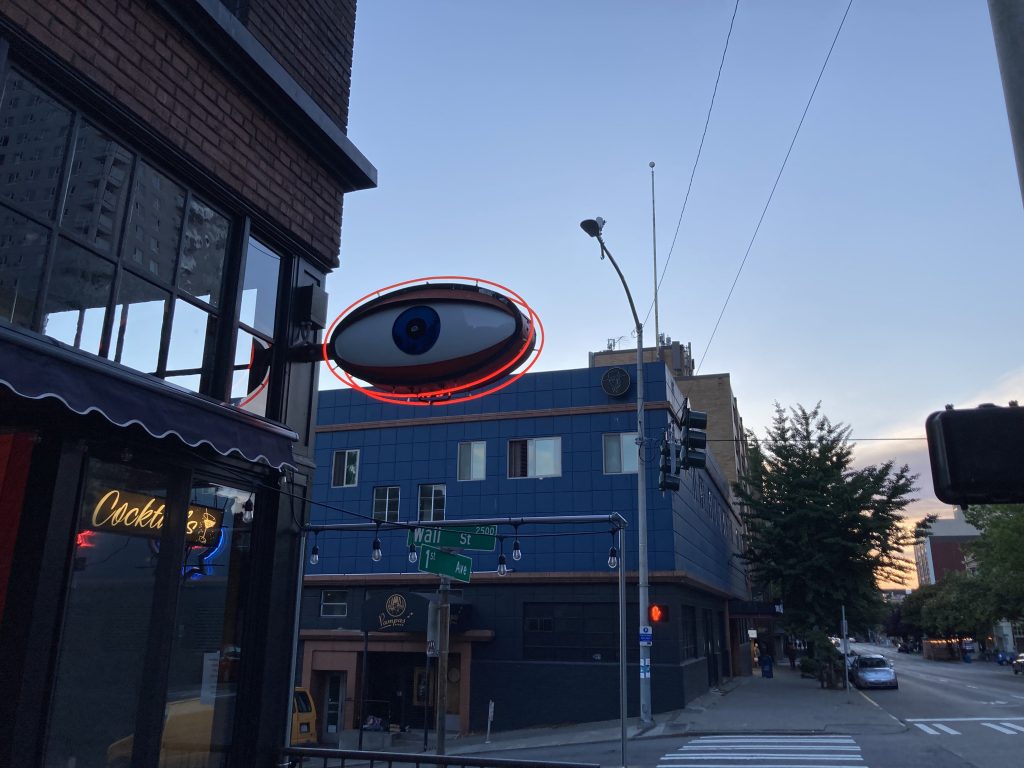
‘Hanging like some dread spider in the sky above Bartlett Forest is New Hampshire’s ‘Mitten Tree,’ a long dead elm that has been the subject of local yarn bombing for nearly a decade now. Once a cozy-seeming installation, its brittle branches have begun to bend and crack under the weight of decaying wool. Scarves and mittens unravel until their entrails, caught up in the wind, go looping back into the vast moldering network or slap wetly at distracted visitors. It smells of a drowned dog and that alone has been enough to dissuade the once fanatic crochet vandals. It is an abandoned place and, as of publication, is likely to slough off the Wayside within a year.’
It’s late evening by the time Hector and I make it out to the ‘Mitten Tree’ but the hiking isn’t so unpleasant. The trail is wide enough that the moon, just waning from full, provides plenty of light to walk by. Hector busies himself in piles of dry leaves, hopping between them, thrashing about, seeming to search for the perfect specimen. I’ve done a lot of research on rabbit nutrition since acquiring him from ‘The Sunburn Experience.’ The forums would disapprove of his eating wild grasses and leaves, but it seems cruel to stop him. Isn’t this what a wild rabbit would do?
The ‘Mitten Tree’ does stink and it has certainly taken on something of a sinister shape in decline. Only a few of its titular garments have maintained any semblance to the human hand and those that have wave eerily in the wind, silhouetted by moonlight. I sit and let Hector roll about in the leaves a little while longer. I wonder whether I have it in me to knit him a rabbit-sized sweater- whether instructions for that sort of thing exist on the internet somewhere. Surely I’m not the first person to worry about the temperature of a hairless rabbit.
Hector and I both leap when, apropos of nothing, the ‘Mitten Tree’ suddenly illuminates. Somebody has laced it with string lights and connected them all to a small solar battery and a timer. The lights play off several ornaments in delicate glass. In technicolor, the ‘Mitten Tree’ almost looks almost merry, again.
Hector is enraptured by the sight. I have to hold him back, afraid he’ll chew through a wire somewhere and electrocute himself. I’m impressed too and a little baffled. Haven’t we been on the edge of the winter for months now? I can’t remember the last time I noticed the holidays. It must have been Halloween five times since the last Christmas.
How long has it been autumn?
-traveler
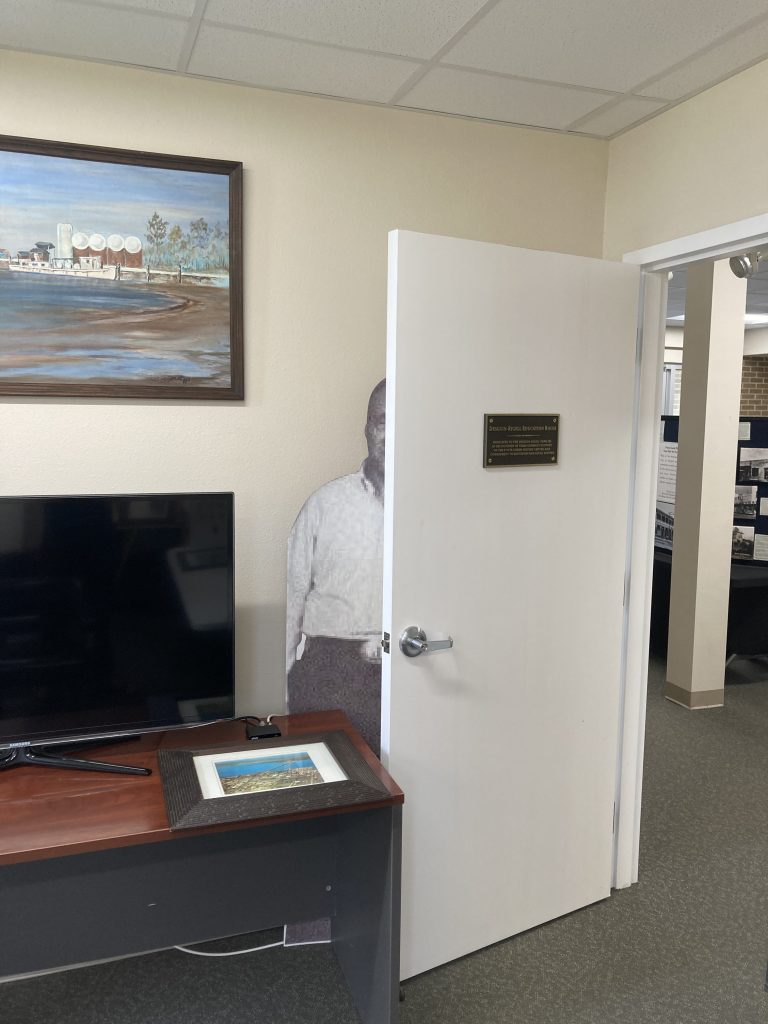
It’s autumn at ‘The Fresh Air-boretum.’ A miniature forest of gold and brown air fresheners is situated over model terrain, sprawled over a massive wooden platform and roped off at an appropriate distance. The smell fills the silo that houses them. It’s sharp and chemical, foremost, with hints of pumpkin spice, cinnamon, and coffee, maybe. It’s impossible to smell anything else- not even the small preview of winter tucked away in a corner, supposedly pine and spearmint.
Hector wants nothing to do with it. He wants nothing to do with the masks we’re offered at the front to protect our sinuses. The woman there offers to watch him in his kennel.
‘The Fresh Air-boretum’ doubles as an air freshener museum so I leave a bag of carrots and try to hold my breath long enough to take in a little history.
‘Ignore what ‘The Fresh Air-boretum’ says about itself. It’s all likely true but it’s all ‘financial hardships’ and ‘one man’s dream’ and ‘a journey to restore a sense of smell.’ These cliché origin factoids conveniently skip the fact that, until 2011, ‘The Fresh Air-boretum’ concealed the legs of its exhibits with curtains and in March of that same year a janitor followed a trail of ants and discovered that a serial killer (or many serial killers) had been depositing the bodies of their victims underneath said tables. For years. Police pulled 23 bodies from the silo that day and no arrests were ever made.
The dead make for fertile earth, reader. No forest grows without the dead.’
I get most of the way through the ‘The Fresh Air-boretum’ before I give in to the urge to look under the platform. There is a body right there, right at my feet, and I scrabble backward, slam my head on the opposite wall. The air freshener forest sways gently as I realize the body is only a cut-out- a black silhouette with three words painted in white: ‘Thanks for coming!’
-traveler
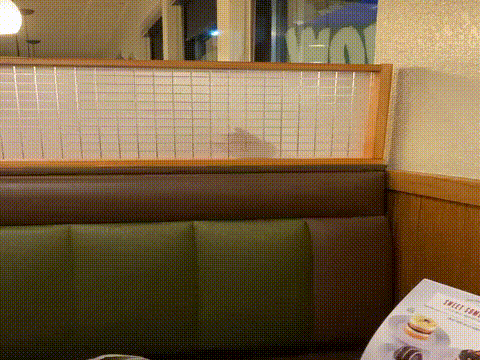
Hector takes to ‘The Prairie Dog Capital City’ with uncharacteristic delight. He’s lived a fairly sheltered life, away from other creatures his size. He’s caught glimpses of natural habitats before this but ‘The Prairie Dog Capital City’ is the New York of small mammal ecosystems- according to some sources, anyway.
‘‘The Prairie Dog Capital City’ is the New York of small mammal ecosystems. It has everything a street-savvy prairie dog might desire: reliable infrastructure, relative security, diverse work opportunities, and a growing underground music scene. At least, that’s what on-site researchers maintain. Researchers at ‘The Prairie Dog Capital City’ have a tendency to assert facts about the site that don’t quite reflect prairie dog behavior elsewhere- that don’t quite reflect reality as the average person might otherwise experience it.
Alleged prairie dog music, for instance, sounds a lot like the fearful chittering one might expect when as a human looms over a tunnel entrance and attempts to feed a microphone into a chamber below. Prairie dog socialites look a lot like specimens that have been dressed up in crudely-made costumes and therefore rejected from the general population (as opposed to being ‘a little snooty’). The infamous prairie dog crime syndicate that operated from 2009 to 2015 appears to have been orchestrated entirely by researchers. The heists, the betrayals, the outright murders- they are all projections of schisms that occurred among the research team at the time.
The only honest thing that seems to have happened in ‘The Prairie Dog Capital City’ is the 2019 ousting of a puppet mayor that had been installed by the researchers a year prior. Mayor Squeak, trained in captivity, was eviscerated soon after his arrival in the city. A day later, prairie dogs at the border became aggressive with researchers who attempted to recover the body. These patrols tested negative for rabies- for any serious diseases- but the procedure involved killed the specimens and seemed to fuel the sudden isolationist movement within ‘The Prairie Dog Capital City.’ The entire colony went dark for nine months.
In 2020, the prairie dogs established an open border and a small tourist-friendly area that looks much like any old prairie dog town. It isn’t a particularly popular destination, but the denizens don’t seem to mind so much.’
I don’t think too much about letting Hector off the leash in the prairie dog/human demilitarized area. He’s never shown much interest in escape. Today, however, he dashes out into ‘The Capital City’ proper and when I try to chase him I find a dozen angry prairie dogs leaping out of tunnels around me to bare their teeth and hiss. By the time I’ve made it back over the border, Hector is gone.
I wait two days for the old rabbit to return, wondering whether he’s been killed or abducted or tried in a prairie dog court of some kind or whether he’s just started a new life for himself- one that doesn’t involve long days on the motorcycle and cool autumn nights in a tent.
On the third day, a retired prairie dog researcher sets up camp nearby and presses sample tracks of his prairie dog classical jazz on me: a sure sign that it’s time to move on.
Hector emerges from a tunnel as soon as I start the bike, as though it were the cue he’d been waiting for all along. He seems well-fed and healthy and maybe a little tired too. He settles calmly into his kennel and is asleep before I’ve got my helmet on. I hope this means he’s choosing to be along for the ride, but that’s exactly the sort of sentiment I would project.
-traveler
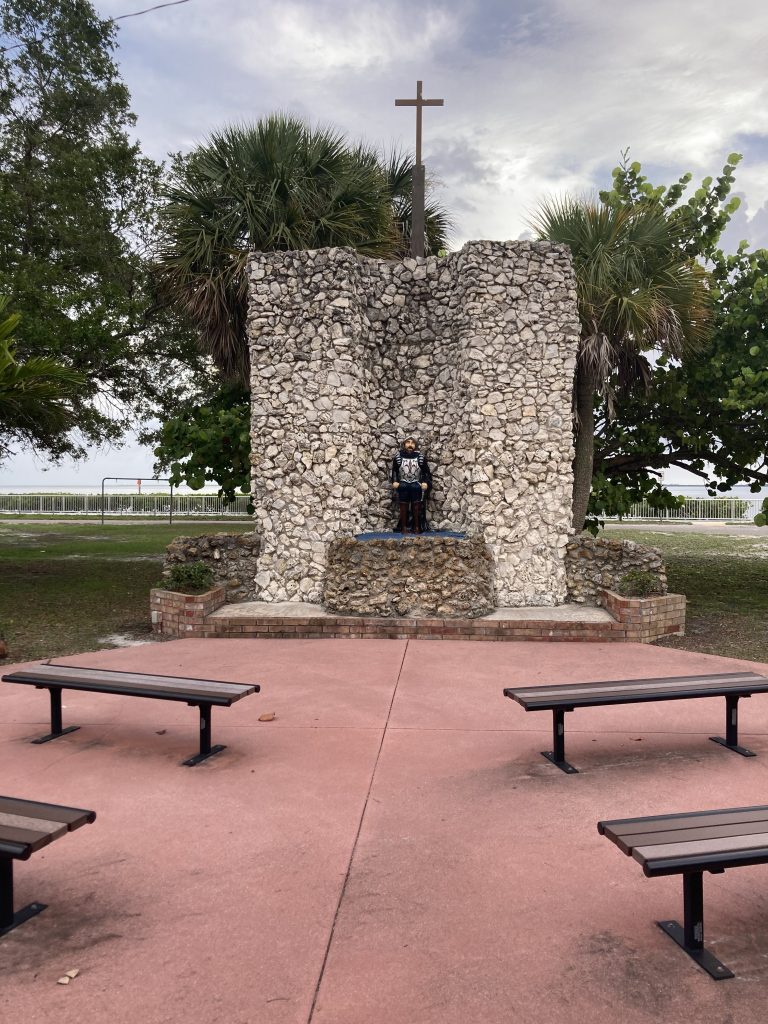
Shit- really? That’s what a toilet sounds like on an airplane?
I try the flush again to confirm and the roar of it digs under my fingers, works its way between the skin of my palms and my head. It fills my ears- makes my heart beat faster. It almost makes me angry, some sort of defensive animal instinct that flares up as though I’m faced with an unknown predator. The last little bit of the process is the worst: a shrieking intake of air, like a child desperately sucking ice from the bottom of a slushy. It bears no resemblance to the relatively cheerful glugging of a terrestrial toilet. It’s monstrous.
I’ve never traveled by air before and now I’m not sure I ever will.
‘Indiana is home to ‘Jill Landstrom’s Center for Exposure to Frightening Childhood Noises,’ an establishment that billed itself as a medical institution but quickly devolved into a nostalgic sideshow. Visitors shuffle between dark rooms and are met at the center of each with some grim-seeming noisemaker and a flashing red button. Pressing the button brings the exhibit to life, usually leading with a brief, animatronic explanation of what exactly creates the sound and climaxing with the sound itself.
‘Landstrom’s Center’ deserves an amount of praise for its determined adherence to authenticity. Where possible, all of its exhibits replicate the sounds with practical effects rather than pre-recorded samples. Landstrom’s staff consists of retired engineers, special-effects artists, and magicians. The admission cost is high, the appeal is limited, but there is nothing else like it except the frightening chaos of childhood itself.
Its sister site, ‘Jill Landstrom’s Center for Exposure to Stressful Adult Noises,’ is skippable unless one feels compelled to listen to the audio of looping DVD menus and the indistinct sounds of a car engine that will fail within a month and cost a great deal to repair.’
Hector and I make it as far as the ‘High Pitched Tone at the End of a VHS Tape’ room before the cumulative stress of the exhibits is too much. Aside from the motorcycle- aside from the occasional noisy disaster- I’ve settled into a fairly quiet life. Maybe I’ll return to ‘Landstrom’s Center’ when it’s time to reintegrate- prepare myself for the predictable scares of stationary life. Until then, I’ll content myself with crickets and the raucous snoring of an old rabbit.
-traveler
© 2024 · Dylan Bach // Sun Logo - Jessica Hayworth